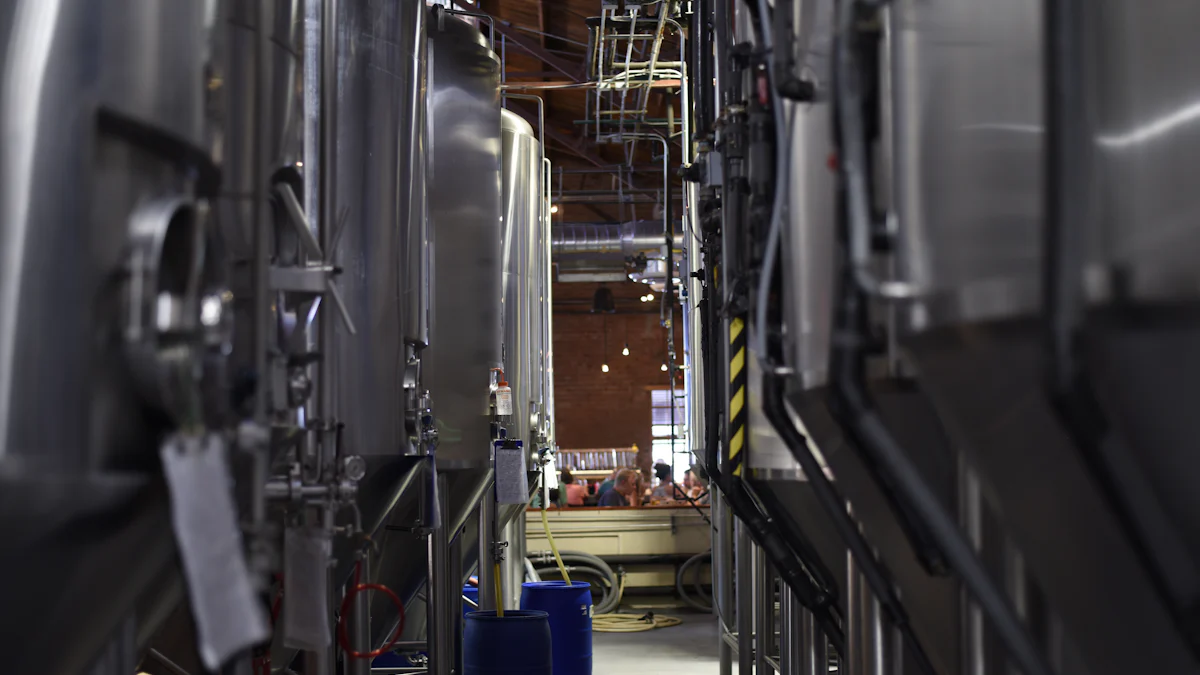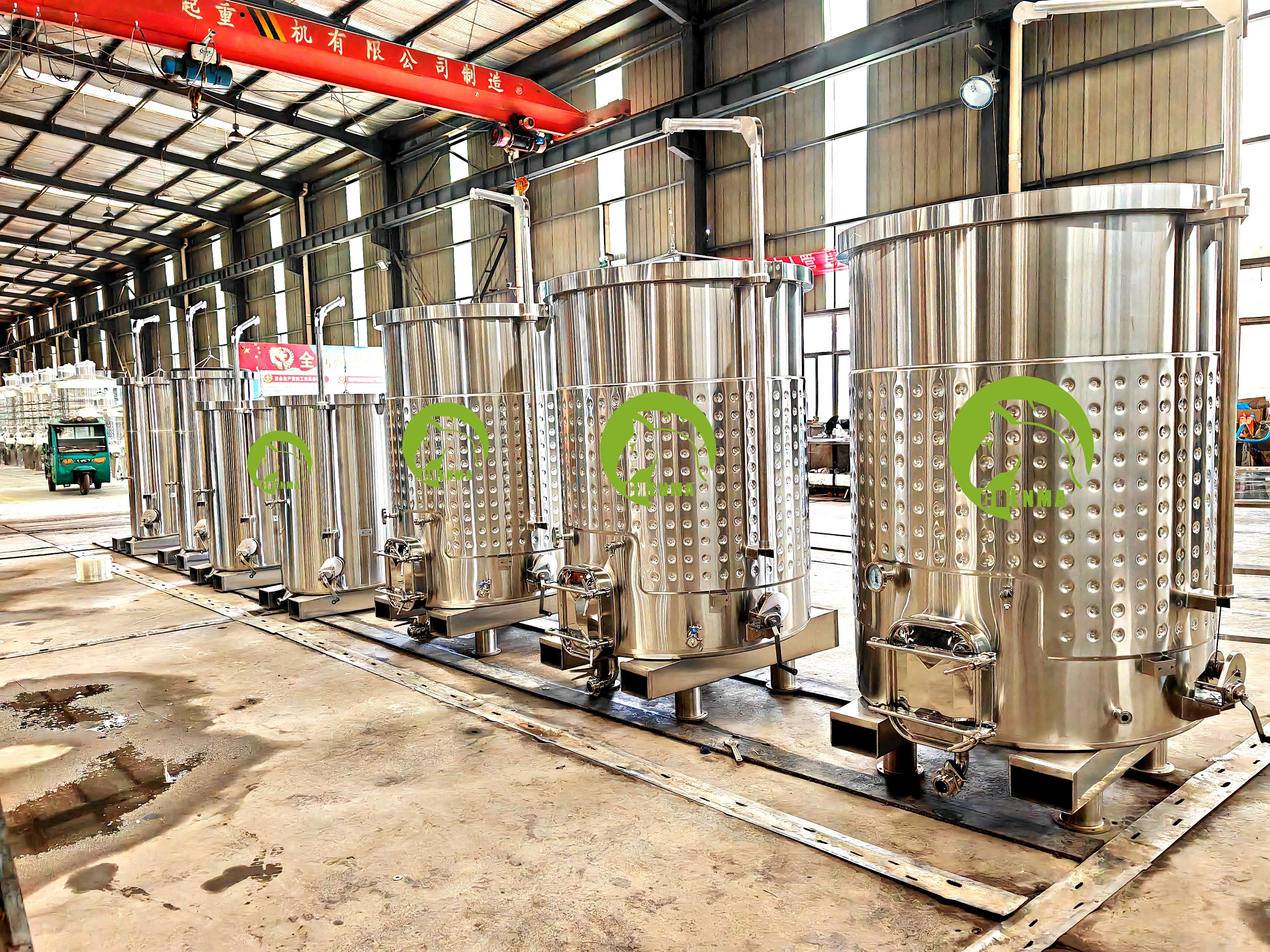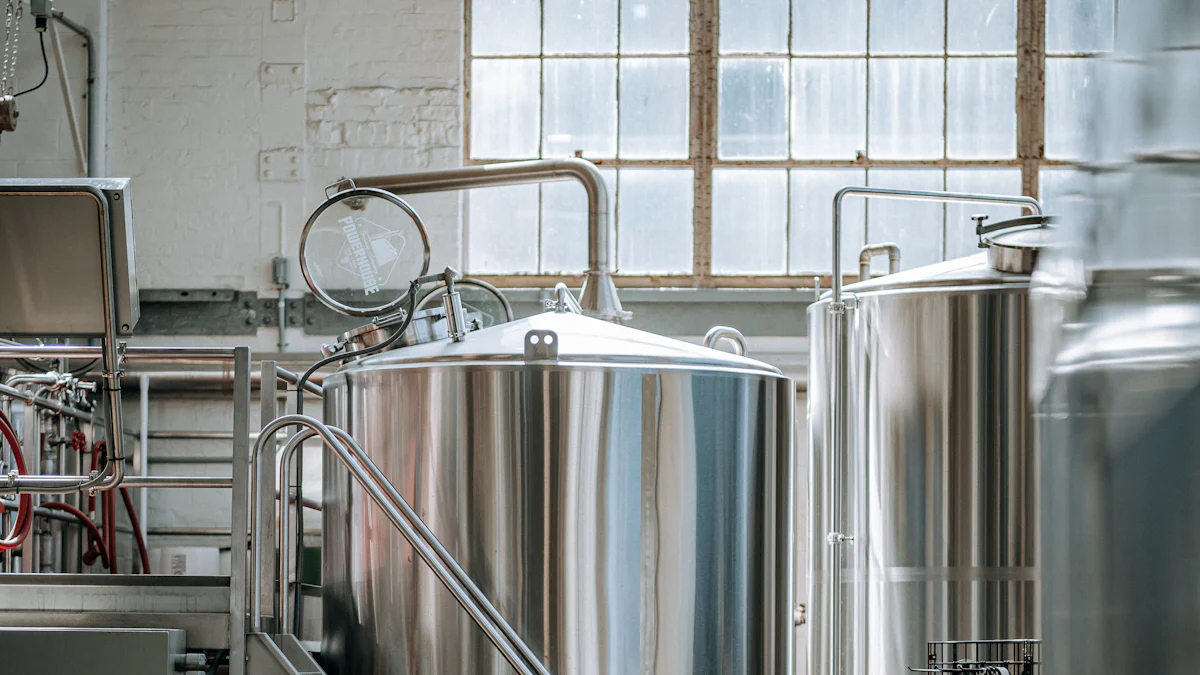1. About the Client:
Our Philippine client is a distributor,his clients have a palm oil factory and they need 6 80-ton stainless steel palm oil tanks and need 6x 80tons stainless steel palm oil tanks. In addition to providing the stainless steel edible oil tanks, our distributor also provides packaging equipment, offering a complete turnkey project.
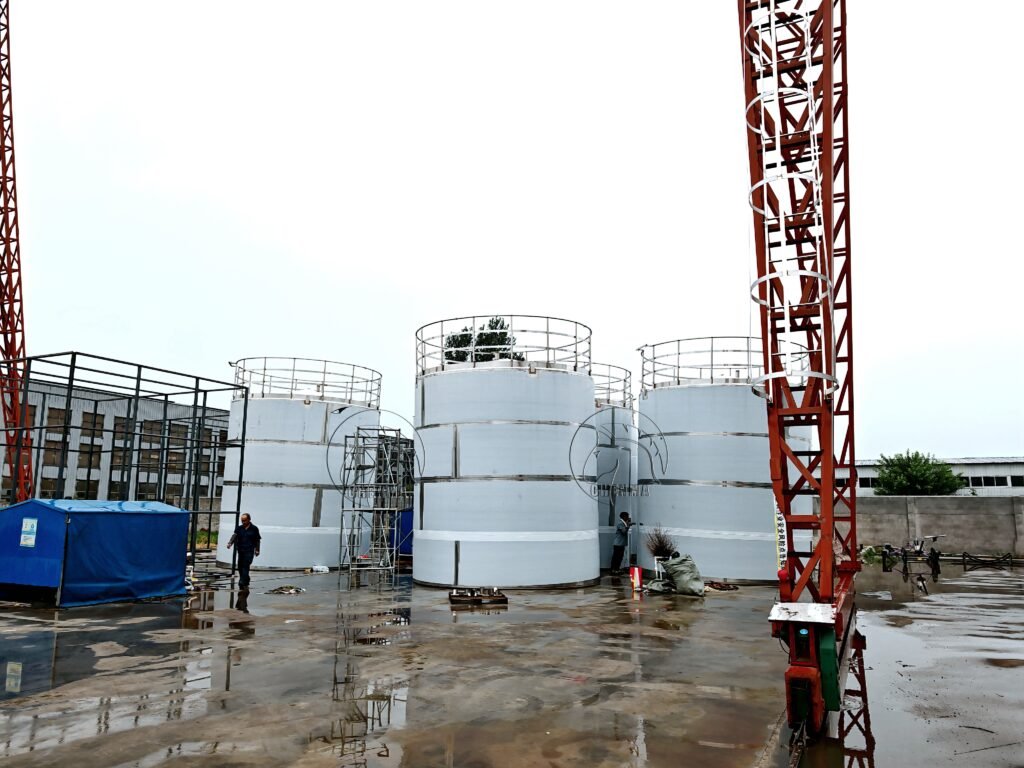
2. Challenge 1:
As we all know, the temperature in the Philippines remains above 27°C year-round. Since 80-ton palm oil tanks are quite large, indoor installation would require a building height of at least 7 meters, and installation space would also need to be considered. Outdoor installations, however, require minimal exposure to high temperatures, as palm oil cannot be stored above 40°C. In the summer, the tanks must be equipped with a refrigeration system, but this costs significantly more than single-layer tanks.
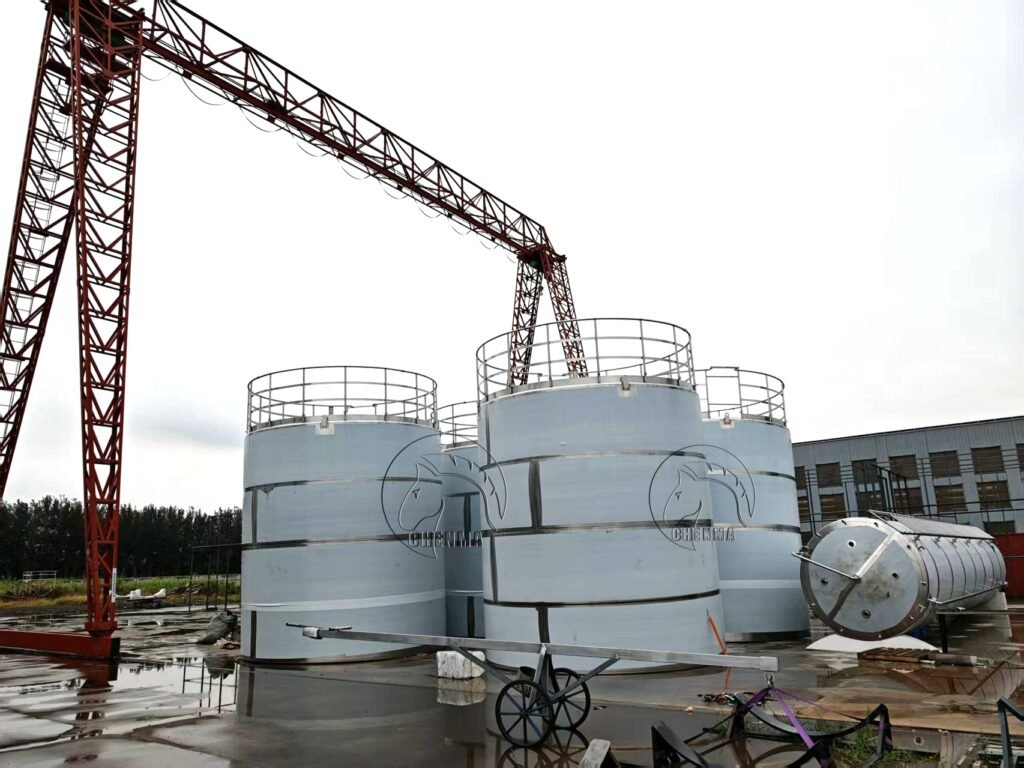
3. Solution:
For cost considerations, the client opted to install the 80tons stainless steel edible cooking oil tanks indoors, they chose legless tanks, also known as plinth-mouthed tanks, and 6x 80tons tanks came with an operating platform. However, due to height constraints within the client’s facility, the six tanks were relocated to different locations, and the operating platforms were modified to include a ladder and guardrail for each tank.
4. Another Challenge:
Initially, because we only considered the 80tons tanks requiring flat rack container transport, we designed two tanks to fit into a 40-foot flat rack container. The diameter of the 80tons palm oil tanks was designed to be approximately 4.5 meters, exceeding the 4-meter mark. This significantly impacted subsequent flatbed container transportation.
The 6x80tons stainless steel palm oil tanks were completed in September and the customer visited our factory to inspect the tanks’ quality and was very satisfied, customer quickly arranged the final payment, and we then contacted freight forwarders to order flat rack containers for transportation. Due to our lack of experience in shipping large tanks, we were unaware that shipping companies couldn’t arrange for frame containers wider than 4 meters. We contacted nearly 20 freight forwarders, and nearly all of them told us that shipping companies wouldn’t accept cargo wider than 4 meters and that we had to ship it by bulk carrier. However, bulk shipping costs are almost double those of flat rack containers, and we charged the customer the same shipping fee as the flat rack container. We explained this carefully, and understandably, the customer was very dissatisfied, unable to afford the additional shipping costs.
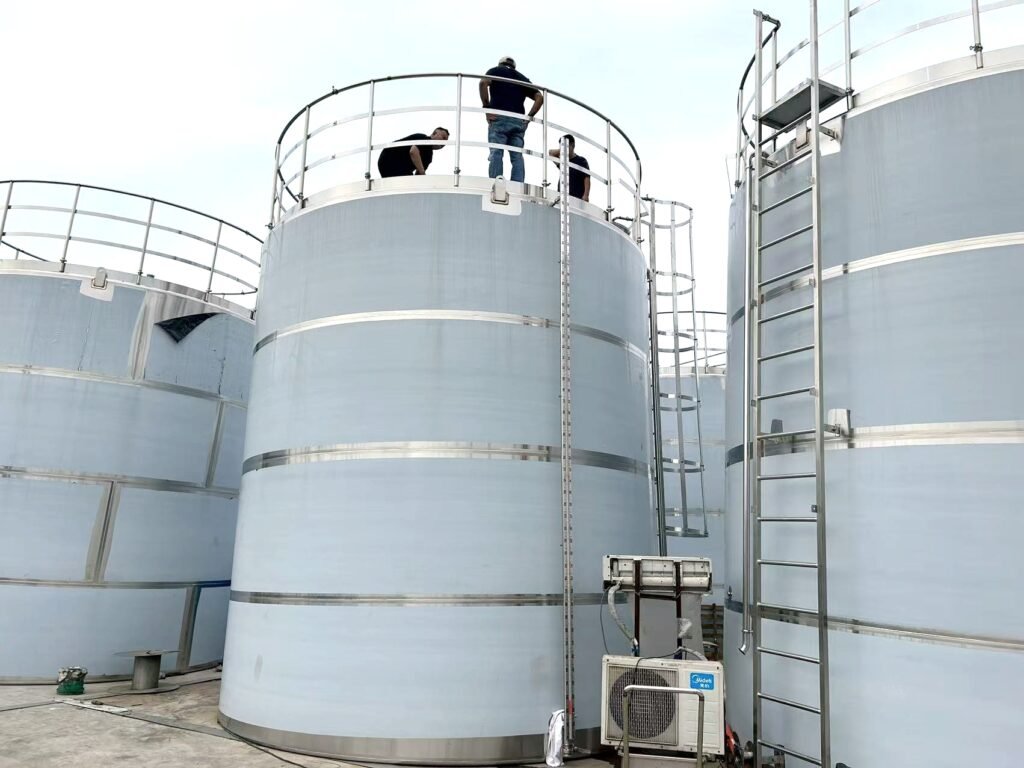
5. Solution:
Our company held a meeting to discuss how to resolve this issue for the customer and the additional shipping costs of nearly $14,000. We unanimously agreed to compensate the customer and book a vessel as soon as possible. We needed to arrange transportation promptly and safely, and our company would cover the additional costs. We quickly contacted an experienced freight forwarder specializing in bulk cargo transportation and booked a bulk vessel for the customer. The shipment was successfully delivered to the customer’s designated port. The customer was deeply grateful for our customer-first service philosophy.
6. Review of the Key Highlights and Challenges of This Case Study:
1) Flexible Product Design: We successfully adapted the “operating platform” solution to a “single ladder + guardrail” solution based on the customer’s factory conditions, resolving installation space and height issues.
2) Excellent Quality Control: The customer was extremely satisfied after inspection and promptly paid the final payment, demonstrating the high quality of our products and building trust.
3) Responsible Crisis Management: Faced with an unexpected transportation crisis, our company adhered to a “customer-first” philosophy, proactively shouldering the significant additional costs, ultimately earning the customer’s gratitude and long-term trust.
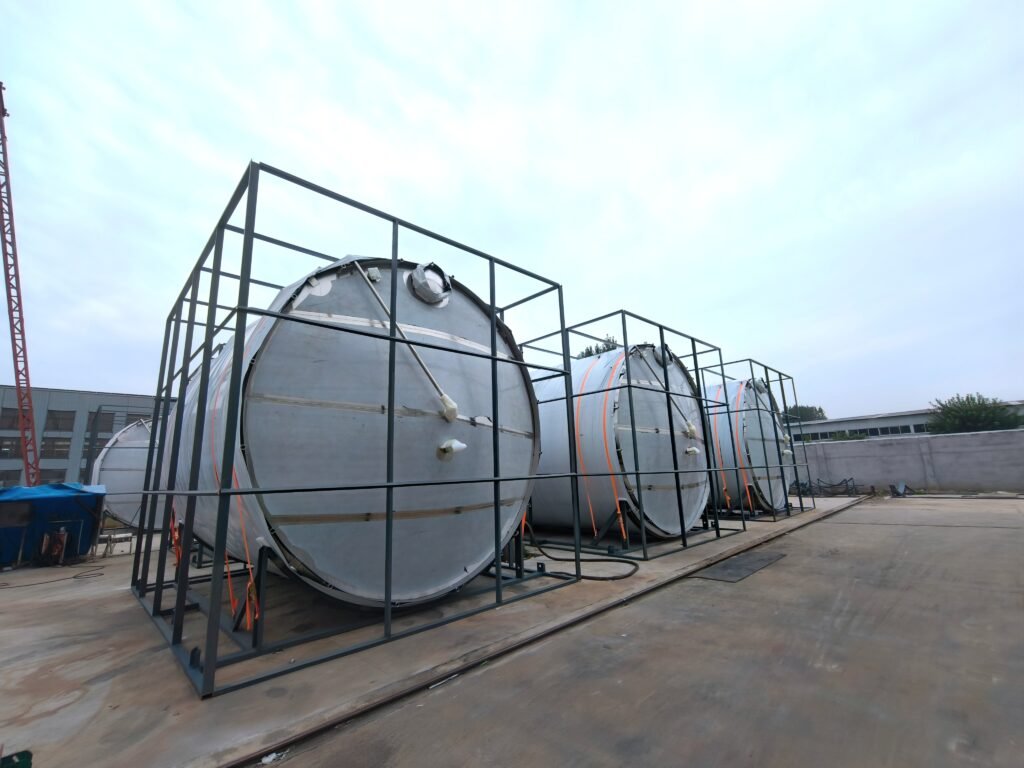
Results:
Even with our extensive experience, unexpected situations can sometimes arise. When problems arise, we must proactively resolve them for our clients, rather than simply passing them the buck. In complex B2B projects, we’ve learned that an excellent supplier must not only provide high-quality products but also possess strong supply chain integration and risk management capabilities.

